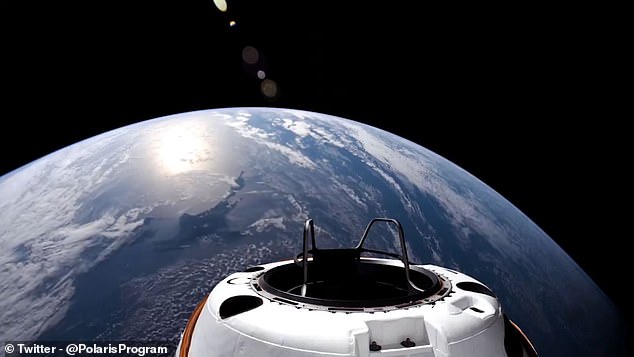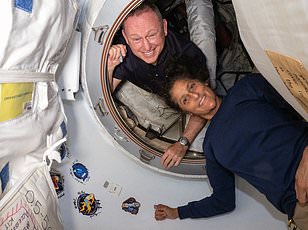More than 435 miles (700km) above our heads, the crew of SpaceX 's Polaris Dawn mission is making history as they embark on the world's first private spacewalk.
More than 435 miles (700km) above our heads,the crew of SpaceX's Polaris Dawn mission is making history as they embark on the world's first private spacewalk.
At 10:58 BST (05:58 ET),billionaire Jared Isaacman is set to become the first non-professional astronaut to step out into the vacuum of space.
During a two-hour float at nearly twice the height of the International Space Station,Isaacman and mission specialist Sarah Gillis will take turns exiting their spacecraft.
The risky mission will see Isaacman and Gillis face dangerous radiation and life-threatening pressure changes as they test SpaceX's new spacesuits.
MailOnline will be bringing you all the latest as it happens,so be sure to follow the livestream below to watch this groundbreaking mission.


The crew will also perform nearly 40 scientific experiments including a test of new smart contact lenses which will take biometric readings from the astronauts. Pictured: Sarah Gillis wears a smart contact lens in her left (page right) eye

NASA has noted that it is crucial 'to fly through this region quickly to limit exposure to radiation,' since high doses of space radiation can increase astronauts' long-term risk of cancer by damaging cellular DNA.
By stepping out beyond the protection of the spacecraft,Isaacman and Gillan will once again expose themselves to harmful radiation,albeit in a far smaller dose.
While in space,Polaris Dawn will also conduct nearly 40 scientific experiments some of which will measure the harmful effects of exposure to radiation.
These also include testing contact lenses embedded with microelectronics to continuously monitor changes in eye pressure and shape.
The Polaris Dawn crew will also take the opportunity to trial SpaceX's latest laser-based communication system.
They will attempt to communicate between the spaceship and Starlink - SpaceX's more than 6,000-strong constellation of internet satellites,in a bid to boost space communication speeds.
After six days in space,the mission will conclude with a splashdown off the coast of Florida.
FloridaSpaceXEarthNasa

© TopicFashion Privacy Policy Contact us